 Your new post is loading...
 Your new post is loading...
In June 2015, a new, hyperspecific website named Van Winkle’s went live. It was billed as an online destination for “all aspects of sleep and various nocturnal adventures” by its editorial director, Elizabeth Spiers, formerly an editor at Gawker and the Observer. In its first week, the site’s pieces included a listicle about dream sequence clichés and a 2,800-word feature on the rise of benzodiazepine prescriptions. Its editor-in-chief, Jeff Koyen, heralded it as “the first editorial venture of its kind.” What he meant by that had as much to do with its niche subject matter as it did its funding source: Van Winkle’s was not a traditionally independent journalistic venture, but the latest product of mattress startup Casper.
“We have a long-term vision for Casper to become the dedicated brand for all things sleep, and part of owning that category is owning the best content related to it,” Casper CEO Philip Krim told The Wall Street Journal at the time, speaking pure startup. He later added: “The mandate is to create awesome content and that’s it.”
CNN has partnered with Snapchat Discover for a daily news program called The Update. The show launches today on Snapchat, and provides a rundown of the top stories from the day featuring videos from CNN reporters and bureaus around the world. The Update is scheduled to begin streaming on Snapchat Discover each day at 6 p.m. ET and will also produce breaking news segments. Adweek’s Jason Lynch writes that each episode will feature five or more stories, all in Snap’s vertical video format—as well as breaking news segments....
A recent study released by the Donald W. Reynolds Journalism Institute identified the top trusted news sources. We looked into our data to see what these publishers are doing to rebuild trust in the media on social. Trust in the media remains dismal. A 2016 Gallup poll found that journalists are trusted just above lawyers and state governors. In the UK, journalists were in the bottom five of professions, lower than real estate agents. Recently, 28 newsrooms participated in the Trusting News project, which involved asking audiences about their thoughts on the credibility of news....
It’s hard to extract meaning from raw data only, so we enrich our data by adding story metadata such as authorship, publication sources, entities, topic classification; social data including influencers on a story’s distribution, audience size, social velocity, and performance against peer stories. With this information, you can unpack each story and see how it is spreading. You can quickly spot events of significance in any topic, and analyze by format to find what works. Meanwhile, our algorithms can already predict the eventual reach of newly published stories, and extract trending entities (recently, this power was used to pounce on and debunk “disinformation” spreading in the run up to the French Presidential election). Our metrics can be used to spot “white space” opportunities with an audience, by analyzing which angles on stories are over-performing with an audience but are underreported. We also plan to use algorithms to analyze whether a story is likely to be true, false, or biased based on source and other characteristics, and are working on making our recommendations much more powerful, such as: “Here’s what your audience will like today.”...
As I reported in the villages of rural Nepal after the earthquake, I posted iPhone photographs with short dispatches on my Instagram account (@sonianarang). I suddenly found my Instagram feed full of questions about the situation in Nepal, so I kept posting more and more. In my Instagram photos, I tried to showcase the life of regular people I was meeting everyday – women who had built makeshift shelters, young mothers in a tent with their babies, and schoolchildren trying to study despite the disastrous earthquake. For me, Instagram was the perfect tool to get real-time photographs out into the world about how the earthquake had changed people’s lives. Everyday Instagram Feeds With more than 700 million people on Instagram as of April 2017, this popular photo-sharing platform has become a powerful tool for journalists globally. The rise of fascinating, region-specific Instagram feeds curated by a wide range of photographers offer an insider’s look into the “everyday” lives of people around the world. Some of my favorite feeds allow me to discover stories, people, and photographers in the Middle East (@everydaymiddleeast), Latin America (@everydaylatinamerica) and Africa (@everydayafrica), right from the palm of my hands....
In other words, social data shouldn’t just be about measuring content distribution – it can also be used in the editorial process itself, right at the ideation stage.Many newsrooms already have particular ways of integrating social analytics and metrics into their workflows. Morning editors will keep a close eye on the stories that saw heavy engagement overnight as a means of informing their coverage in the early part of the day. But in a digital publishing space that is more competitive, where publishers have to fight hard to gain attention in news feeds, there’s room for much more creativity and with the data. We look at three ways that newsrooms can look at harnessing social data to improve their content and storytelling....
Journalism has a trust problem.
In the run-up to the 2016 election, a Gallup poll revealed Americans' trust in the press had sunk to an all-time low, with just 32 percent surveyed saying they felt "a great deal" or "a fair amount" of trust in the mainstream media.
Whether it's criticism from the Trump administration, the failure of the media to correctly forecast the outcome of the 2016 election or the rise of ideological filter bubbles on social media, there's a growing rift between news organizations and the consumers they exist to serve.
That's why a coalition of funders, academics, tech leaders, academic institutions, nonprofits and funders, including Facebook, The Knight Foundation, Mozilla and Craigslist Founder Craig Newmark, are banding together to figure out solutions.
Earlier today, they announced the News Integrity Initiative, a $14 million project that aims to combat declining trust in the news media and advance news literacy.
Narrative gravity is like confirmation bias, “the tendency to search for, interpret, favor, and recall information in a way that confirms one’s beliefs.” But with narratives, it’s less about personal beliefs and more of a bandwagon effect, where everyone processes and interprets information through a framework that is both easily digestible and broadly accepted. Narrative gravity is what makes a startup’s story clock tick. Narrative gravity exists beyond tech. It’s why Senator John McCain is still considered a maverick and why Tiger Woods’ big comeback is always right around the corner. The gravitational pull of a prevailing narrative is hard to resist....
American news consumers are slightly more likely to access digital news through an organization’s website or app than they are to get it through social media, according to a recent Pew Center analysis. Thirty-six percent of consumers said they received digital news from an organization’s website or app, while 35 percent said they got it through social media. Twenty percent received news via a search engine; 15 percent received it through emails, texts or alerts from a news organizations; and seven percent got it through an email or text from family members or friends. One of the most notable findings of the analysis is that news consumers are more likely to remember the name of the news organization from which a story came if they followed a link from an email, text or other alert from the organization. The average rate for recall was 78 percent. The rate was 52 percent if the link came from social media and 50 percent if it came from a family member or friend through email or text....
Using NewsWhip Analytics, we found the top 10 stories from five of our top 10 Facebook publishers in December 2016. NewsWhip Analytics can give data on hundreds of stories from different publishers over various time periods, allowing audience development and analytics teams to perform in-depth analysis on their most successful content.
We ranked the stories by total engagements they received on Facebook, Twitter, LinkedIn and Pinterest, and then calculated the average word count for the top ten stories. We didn’t include headlines, subheadings, pull quotes, or calls to action within the story (‘Read More’, ‘Scroll down for video’ etc) in the word count.
Here’s what the average length of the top ten most engaged stories from five top publishers were in December....
Within hours of my child sexual abuse story being posted online, ripoffs started emerging – with the bylines of other journalists posted on them. Mamamia took 900 words of my 1,900-word story. The Daily Mail’s headline was not about the catastrophic impacts of child sexual abuse. It was about a 12-year-old boy having sex with his mother. I’d promised Hamish and Ian their stories were safe with me. But they weren’t. After all their suffering, what impact would this have on them?...
How do you measure a year in news? 2016 brought political earthquakes in the U.S. and Britain. Police shootings and terror attacks were recorded on cell phones. In pop culture, we collectively mourned for Prince and Carrie Fisher, gaped in astonishment at Sean Penn’s gonzo interview of El Chapo, and celebrated human achievement at the Rio Olympics. Reporters turned these events into stories that drew the attention of millions of readers. A new report out this week from web analytics firm Chartbeat reveals the best of the best — “the stories that defined the breadth, the depth, and the power of journalism in 2016” — drawing on data from more than 50,000 media sites around the world. How does one story stand out in a sea of content? It has to be outstanding journalism. The 102 stories on the list had the most total engaged time — how long online visitors spent actively reading — of all the stories that Chartbeat measured. In total, they commanded 2.5 billion engaged minutes, or almost five millennia of the world’s collective attention. Not surprisingly, the list is dominated by politics, with Nate Silver’s Election Forecast at the top. The top breaking news story is CNN’s coverage of the Orlando nightclub shooting in June. Sports, opinion and entertainment make the list as well....
According to the Interactive Advertising Bureau (IAB), digital fraud costs advertisers $8.2 billion each year. Some suspect there’s little incentive to fight it because advertisers have priced it into their spend already. Some even suspect publishers are reluctant to clean up non-human traffic (NHT) for fear of hurting revenues. Others, including security expert Dr. Augustine Fou, say that fraud is inevitable, since there will always be “hackers who are very advanced in the use of technology and who don’t play by the normal rules of engagement.” The need to manage
Our new report, “2017 State of Digital Publishers’ Fight Against NHT: To Block NHT or Not to Block,” surveyed 40 of the comScore 250 publishers about their attitudes and experiences with NHT – also known as bots – both as an internal issue and as a discussion point with potential direct buyers of their inventory. Here are some of the critical insights gleaned from the data.
|
We may already be living in a truthless dystopia.
It’s no secret that the professional media is in crisis. But what if the situation is even worse than those of us in the industry thought?
What if vast swaths of the public no longer believe the news on controversial political stories, even when it comes from established media outlets?
What if the public ascribes no value to professional news organizations?
That situation may sound terrifying to journalists and media owners, but we may be heading there quickly.
Researchers at Yale University have found that 40% of the public are now willing to dismiss perfectly accurate stories, regardless of the source. What may be even more disturbing is that articles sourced to a top news brand are perceived to have no more credibility than articles sourced to a joke brand, or none at all.
There’s a moral imperative at the heart of journalism. But as impact has gone from moral beacon to a business metric, starting with the new generation of nonprofit newsrooms who adopted the language and standards of NGOs, impact is turning out to also be good business, for some. "How can you trumpet journalism that has impact when the core of your business strategy has been to reduce the amount of impactful journalism?" -Matt DeRienzo “Many commercial media outlets are taking it as a given that to show real, positive change as a result of their reporting will build a deeper relationship between their brand and their audience,” wrote Fergus Putt and Lindsey Green-Barber in a recent Tow Center report. That relationship is key to the reader revenue model powering digital growth at the New York Times, Washington Post, De Correspondent, and elsewhere. Executive director Matt DeRienzo of LION publishers, a group that supports local independent online news publishers, agrees but says the success of national outlets has yet to trickle down to local news. This especially applies to corporate-owned newspapers whose owners have cut many newsroom resources and centralized others far from the newsroom. Digital offerings from Tronc and Gannett have fared poorly so far....
It is true that users generally don’t want to watch a beautiful four-minute mini-doc that comes after a 30-second pre-roll ad. That’s video as we now know it. But what the market is showing, and what I fundamentally believe, is that viewers want to immerse themselves in a visual story that makes use of the full range of creative techniques afforded by the tiny little computer in their hand that’s connected to the internet. And what that looks like is not exactly a “video” — that’s a new form of journalism. That video that is currently soaring across social media — maybe it’s a text-heavy explainer with dynamic motion graphics, or a video-driven news story with sharply concise captions — is less an evolution of video itself and more of an evolution of the hundreds and thousands of pieces of text-based journalism that are produced and consumed digitally. Audiences that spent time consuming only the first couple of paragraphs of a news story are now watching 45 seconds of a video that conveys the same information. And, yes, sometimes with words on the screen. I believe this will become more sophisticated and more prevalent, and before you tell me that it’s intellectually inferior, just believe me — it’s not in its final form. It’s on us to innovate so that it has the power and impact we want it to....
Fresco is a lot like Uber. But unlike similar apps where you request a car, takeout, or a even a dog walker, Fresco puts a call out for a photojournalist. A newsroom posts a request for video of, say, a crime scene, and a Fresco user in the area can accept, take a video of it, and upload it to Fresco. If the news outlet uses it, the Fresco user gets paid $50.
TV news stations across the country are using the app, but Fresco is particularly appealing to KTBY, a station in Anchorage, Alaska. Alaska is a big state, and many of KTBY’s viewers live in remote villages that are hours away by plane. It’s hard to cover those communities without spending a ton of money and time. In a Fresco promotional video, Scott Centers, COO of Coastal Television Broadcasting Company, which owns KTBY, marvels that Fresco offers an affordable alternative.
The consistent refrain for publishers in the digital age is that everyone is still trying to figure out what can work, from platforms to advertising to workable, sustainable models. But as the path to enlightenment remains covered in fog, possibly smog, the effects of the digital era’s inscrutable disruption are being felt. The clearest recent illustration was last week’s crop of layoffs from outlets new and old: HuffPost, Vocativ, Time, the Los Angeles Times. The Reuters Digital News Report for 2017 reifies some of the trends good and bad cropping up in various organizations’ earnings reports and elsewhere, offering glimpses of what to try next, where to double down and what to avoid. One of the more obvious findings, and one we’ve all likely memorized by now, is that the growth of digital revenue has not been enough to offset the loss of print revenue. Subscriptions have been picking up some of that slack....
The results read like a revelation. The national media really does work in a bubble, something that wasn’t true as recently as 2008. And the bubble is growing more extreme. Concentrated heavily along the coasts, the bubble is both geographic and political. If you’re a working journalist, odds aren’t just that you work in a pro-Clinton county—odds are that you reside in one of the nation’s most pro-Clinton counties. And you’ve got company: If you’re a typical reader of Politico, chances are you’re a citizen of bubbleville, too. The “media bubble” trope might feel overused by critics of journalism who want to sneer at reporters who live in Brooklyn or California and don’t get the “real America” of southern Ohio or rural Kansas. But these numbers suggest it’s no exaggeration: Not only is the bubble real, but it’s more extreme than you might realize. And it’s driven by deep industry trends....
The ascendance of fake news, “alternate facts” and data denial are at the forefront of a cautionary tale that is as much about loss of faith in the media as it is about the political winds. Who is to blame? I will put politics aside to observe that there is certainly a need for greater accountability among the media, writ large. That pool has become a grab-bag of bloggers, tweeters and news channels of all ilk. But even the traditional media share some responsibility for a loss of faith. So what should a college of journalism do? A handful of our alumni have suggested that we take journalism out of our name and focus on a more contemporary approach to news and information. I see it another way: I say we double down on fact-finding, truth-seeking and audience engagement. There has never been a more important time to affirm our allegiance to the standards and practices that are the bedrock of an informed citizenry. Our ethical codes are the right ones. Let’s reinforce them, not abandon them....
News organizations may differ in how much they’re investing in platform-native publishing, but few if any are pulling out entirely. During election week (November 7–13, 2016), the Tow Center for Digital Journalism followed the platform publishing activity of 15 big publishers and found that the organizations overall generated 12,120 posts on platforms. While there wasn’t a single narrative linking all the efforts, Tow did notice a few trends in platform publishing activity overall. — Instant Articles is still popular, though few organizations are going all-in. Vox, The Washington Post, and The Huffington Post are all posting upwards of 80 percent of their content on Instant Articles, while The Wall Street Journal posts less than five percent (and others like Vice and the Chicago Tribune aren’t using it at all)....
The press will destroy Trump and Trump will destroy the press.
Consider that trust in media began falling in the ’70s, coincident with what we believe was our zenith: Watergate. We brought down a President. A Republican President.
Now the press is the nation’s last, best hope to bring down a compromised, corrupt, bigoted, narcissistic, likely insane, incompetent, and possibly dangerous President. A Republican President. Donald Trump.
If the press does what Congress is so far unwilling to do — investigate him — then these two Republican presidencies will bookend the beginning of the end and the end of the end of American mass media. Any last, small hope that anyone on the right would ever again trust, listen to, and be informed by the press will disappear. It doesn’t matter if we are correct or righteous. We won’t be heard. Mass media dies, as does the notion of the mass....
Reported.ly was a news operation that covered breaking news primarily on social and distributed platforms. It was also the first place many people turned to verify developing stories. But in August, its parent company, First Look Media, pulled funding and shut down the site. The Reported.ly team was small and spread out across the globe, which meant they relied on many digital and social tools. Before they said goodbye, the staff compiled a list of some of the tools they found most useful. We take a look at six of their favorites....
Donald Trump is now president. This challenges many of us, not least members of the press. Countless reporters are still shaken and stunned by how he singled out a CNN reporter, one of the most respected news outlets in the world, to attack and humiliate him during his first press conference since winning the elections. Worryingly, none of his fellow journalists in the room stood up for him at the time. This wasn’t Trump’s first attack on the press, and it certainly won’t be his last. The first White House press briefing, held on Saturday, featured bullying, threats and unproven claims. That is why a new level of solidarity and cooperation is needed among the fourth estate. American journalists should stop him from dividing their ranks – however hard their professional competition may be. They should do the opposite: unite, share and collaborate. Even if doing so would mean embracing something quite unfamiliar and new to American journalism....
Donald Trump and his forthcoming presidency may be the greatest gift to Washington journalism since the invention of the expense account. His unorthodox approach to politics and governance has vaporized the standard, useful, yet boring script for reporting on a new administration’s doings. At his news conference last week, Trump began the process of washing the press completely out of his fake hair as he castigated CNN and BuzzFeed for reporting on the oppo-research dossier compiled on him. “Fake news,” said the man who has appeared on InfoWars and commended the outlet’s efforts. Trump’s surrogate Newt Gingrich took to Sean Hannity’s program on Fox to assist in the maiming of the media. Trump and his team “need to go out there and understand they have it in their power to set the terms of this dialogue,” Gingrich said on the Jan. 11 episode. “They can close down the elite press.” Next up came Reince Priebus’announcement that Trump might evict the presidential press corps from the White House for lesser lodging in the adjacent Old Executive Office Building, and Sean Spicer’s admonition that reporters “adhere to a high level of decorum at press briefings and press conferences,” according to a readout of his two-hour summit with the head of the White House Correspondents’ Association. (Or else what, one wonders?) Now, before the Committee to Protect Journalists throws up the batsign and the rest of us bemoan Trump’s actions as anti-press—which they are—let’s thank the incoming president for simplifying our mission. If Trump’s idea of a news conference is to spank the press, if his lieutenants believe the press needs shutting down, if his chief of staff wants to speculate about moving the White House press scrum off the premises, perhaps reporters ought to take the hint and prepare to cover his administration on their own terms. Instead of relying exclusively on the traditional skills of political reporting, the carriers of press cards ought to start thinking of covering Trump’s Washington like a war zone, where conflict follows conflict, where the fog prevents the collection of reliable information directly from the combatants, where the assignment is a matter of life or death....
|



 Your new post is loading...
Your new post is loading...







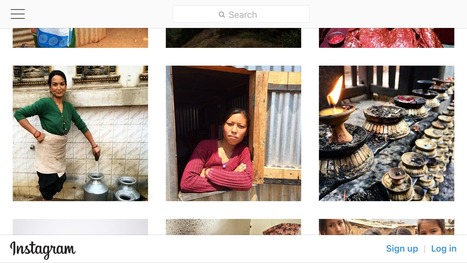




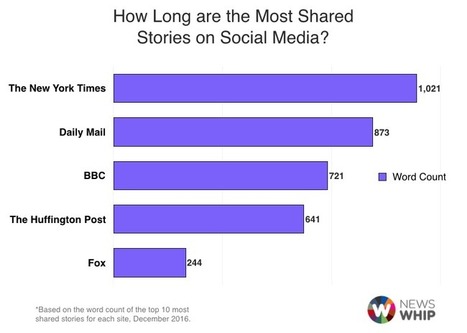

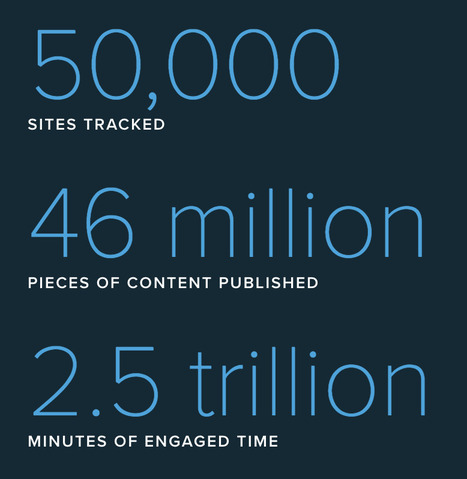


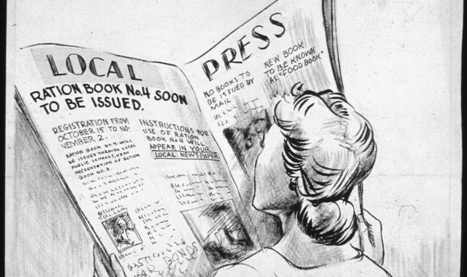
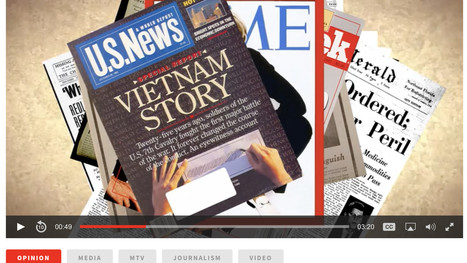
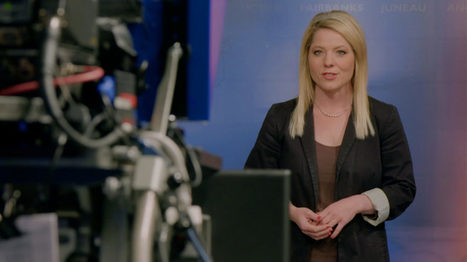


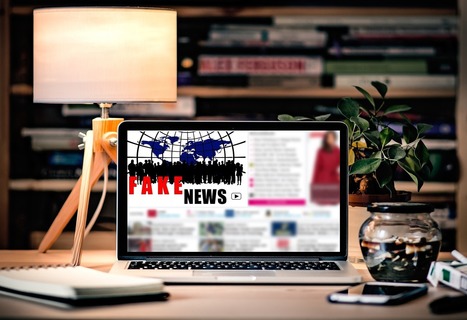
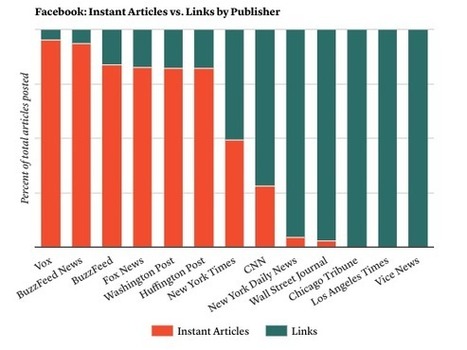










Here's a profile of Van Winkle's "news" and some interesting insight into content marketing and journalism. More recommended reading. 9/10